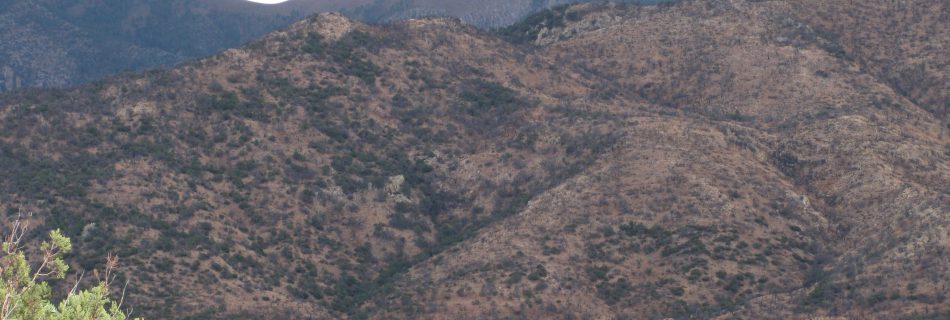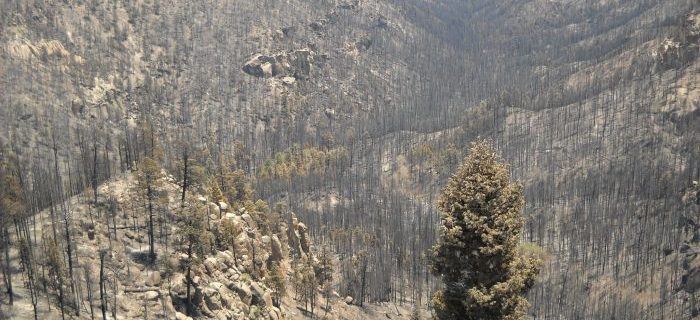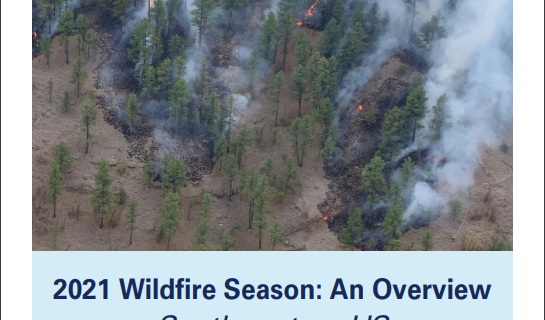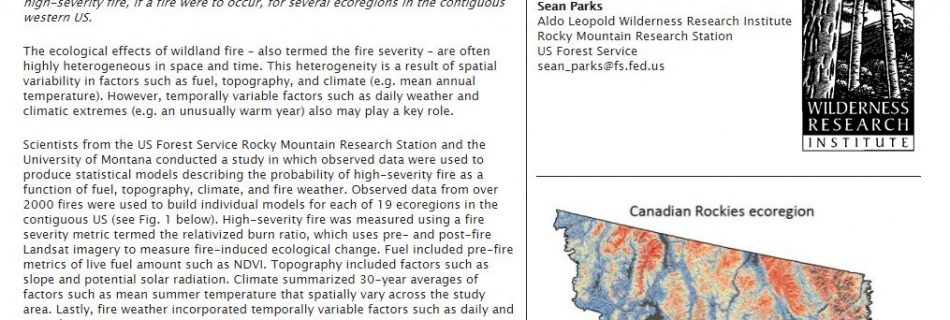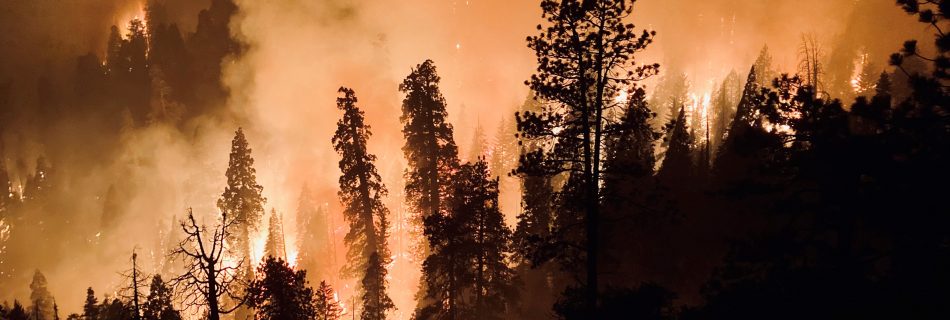Fire Regime Condition Class (FRCC) assessments have been widely used for evaluating ecosystem status in many areas of the U.S. FRCC employs state-and-transition modeling to describe historical vegetation and fire regimes, which provides reference information related to landscape fire frequency, severity, and vegetation composition. Similarity indexing is used to compare historical versus current vegetation and …
Read more “March 2012: FRCC Workshop – (Albuquerque, NM and Flagstaff, AZ)”
The San Juan fire ignited on June 26, 2014 on the White Mountain Apache Reservation and quickly entered the Apache-Sitgreaves National Forest. The fire was wind-driven for the first few days, and fire behavior was influenced by extremely dry fuel conditions related to long-term drought. However, as the fire moved to the southwest it encountered …
Read more “The 2014 San Juan Fire: Fuel Treatments and Fire Management”
Released June 26, 2020 as part of the Hot and Dry Podcast Series by Cally Carswell and Collin Haffey, supported by the Southwest Fire Science Consortium. Catastrophic fires in the Southwest are often a double whammy of fire and floods. The floods that followed the 2011 Las Conchas Fire caused massive erosion, impaired water quality, and …
Read more “After the “Big One” part 2″
This report is the 9th in a series of annual overviews available from the Southwest Fire Science Consortium and the Ecological Restoration Institute. The goal of this overview is to provide a concise summary of the fire season and to facilitate comparison with past fires and fire seasons.
Presenter: Sean Parks, Research Ecologist, Aldo Leopold Wilderness Research Institute, Rocky Mountain Research Station, US Forest Service Date: October 10, 2018 11am AZ/12pm MDT The ecological effects of wildland fire – also termed the fire severity – are often highly heterogeneous in space and time. This heterogeneity is a result of spatial variability in factors …
Read more “October 10, 2018: Modeling and mapping the potential for high severity fire in the western U.S.”
Date: March 30-April 1, 2017 Location: Sheraton Airport Hotel The Wildland Urban Interface (WUI) Summit is a statewide traveling conference that is organized by representatives from state and federal agencies and local non-profits. The WUI Summit focuses on topics that teach local leaders, emergency responders, businesses, and citizens the science behind forest fires and what each player’s …
Read more “March 30-April 1, 2017: New Mexico WUI Summit- Albuquerque, NM”
Presenter: Patrick H Freeborn, PhD, Research Physical Scientist with the USDA Rocky Mountain Research Station Date: December 6, 2022 at 12 MDT Wildfire activity typically subsides sufficiently enough at night to provide firefighters with opportunities to rest and recover. However, nighttime fire operations are not uncommon. Whilst favorable conditions may enable better fire management progress, …
Read more “Nighttime Fire”
This field trip through the Las Conchas Fire scar was part of the SW AFE Fire Ecology Conference in Santa Fe. We visited Valles Caldera and Bandelier National Monument and made several stops in between. The Las Conchas fire began when a gust of wind blew an aspen over onto a power line on June …
Read more “February 27, 2012: Las Conchas Fire”
View fact sheet. Written by Dr. Molly Hunter, February 2011
ERI Working Paper 40 Wildfire Smoke Ecological Restoration Institute Working Paper 40 Resources for Predicting and Mitigating Smoke Impacts of Wildland Fires August 2018
